Age no barrier to organic farming ambition in Vietnam's Hoi An
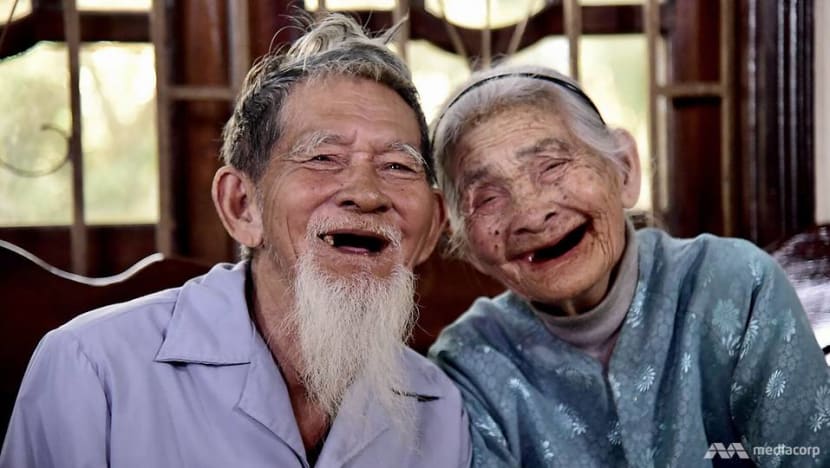
Le Van So, 94, poses with his wife Nguyen Thi Loi, 88, inside their house in Tra Que, a small village on the edge of Hoi An that is known for its organic vegetables. (Photo: Pichayada Promchertchoo)
HOI AN, Vietnam: For many visitors to Tra Que Village, meeting its oldest living couple is a real privilege.
It is not because they rarely come out of their little house near a lagoon – they always show up when tourists stop at their vegetable farm. Rather, both of them are so old it is hard to believe they are still incredibly fit and astonishingly mobile.
Le Van So, 94, is a petite man with long white beard and short grey hair. His wife Nguyen Thi Loi, 88, is a smiley, lean-framed woman with no teeth.

They are probably the most popular couple in this small suburban neighbourhood on the banks of De Vong River, if not in the whole city of Hoi An where their portraits can be found on the walls of local restaurants.
Every day Le Van So and Nguyen Thi Loi wear their ‘non-la’ – Vietnamese conical hats – and brave the sun to show eager tourists around their manicured vegetable farm with unflagging energy. Both of them enjoy posing for selfies with visitors, whose presence makes them beam with pride over their produce – a diverse selection of aromatic herbs and fresh green vegetables grown without chemicals for restaurants in the city.
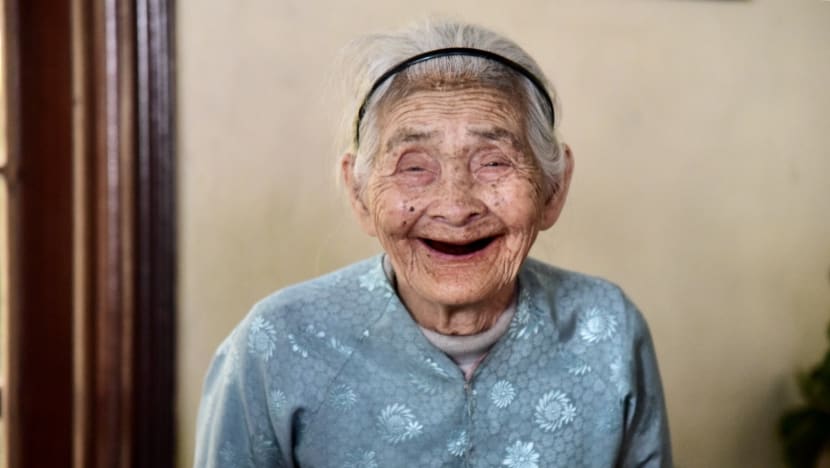
“The vegetables from Tra Que Village taste better than those from other areas,” Le Van So said, while resting on a long wooden armchair next to his wife in their living room. Framed photographs of them laughing and smiling at each other hang on the walls.
“Our village is rich with alluvial soil. That’s why our vegetables are delicious.”
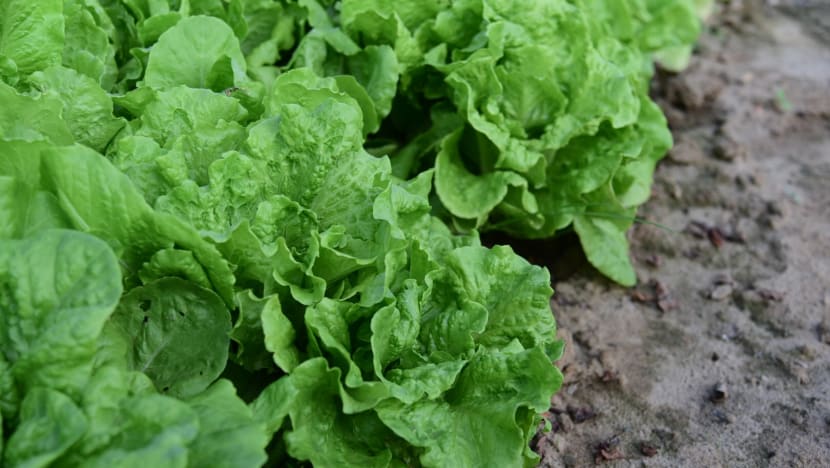
Born to a family of farmers in Tra Que, Le Van So started farming at the age of 10. Like other villagers, he uses a kind of seaweed found in the river and lagoon to fertilise his vegetable beds.
According to the 94-year-old, the seaweed manure gives Tra Que’s vegetables richer aroma and a more distinctive taste compared to those grown elsewhere. Farmers use the seaweed all year round, mixing it with the soil and planting vegetables on top.
“Vegetables from Tra Que Village are the best and our farms are very popular among tourists,” Le Van So said. “Locals’ lives have also improved a lot.”
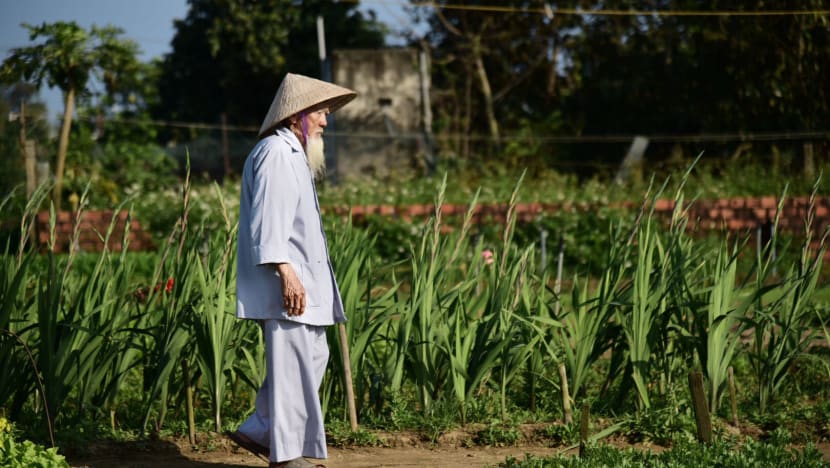
However, Le Van So and other residents of Tra Que Village did not take up organic vegetable farming until about 20 years ago, when the Vietnamese government redesigned the local landscape for community tourism.
From a rough terrain full of wells and ponds, the area was levelled and distributed to local residents who wanted to participate in the programme. Many families shifted their focus from rice cultivation to organic vegetable farming, which gradually grew into a popular tourist attraction in Hoi An.

The village is located about three kilometres away from Hoi An’s city centre and can be accessed by bicycles. Here, visitors can try their hand at farming in a traditional way with local families, take part in cooking classes using organic vegetables from the gardens or simply take a stroll around the cultivation area.
Since its introduction in 2000, community tourism has transformed not only the life of many residents of Tra Que but also their farming method.

“We started using the seaweed as natural fertiliser instead of chemicals. Instead of using chemical pesticides, we spray our vegetables with natural products such as ginger, chili and garlic,” said farmer-turned-restaurant owner Le Van Bay.
“Thanks to the community tourism, vegetables here have become more valuable than before.”
Besides organic farming, the government-backed tourism programme has also brought the residents of Tra Que new business opportunities.
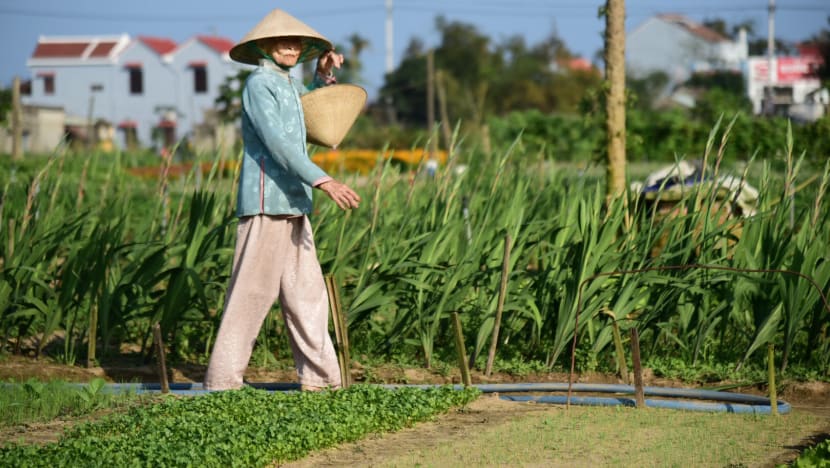
Le Van Bay’s restaurant is one of some 30 eateries that has cropped up in the village over the past two decades. He cooperates with tour agencies and welcomes up to 60 customers on a daily basis. Besides serving them organic Vietnamese food, he also offers a cooking class and foot massage with local herbs.
Income from selling organic vegetables and other tourism businesses has sent his four children to school and ridded his family of poverty.
“Life used to be so tough for us. Now, we’re much better off,” he said.
Across the road, a group of foreign tourists and their Vietnamese tour guide have just arrived at the old couple’s farm.
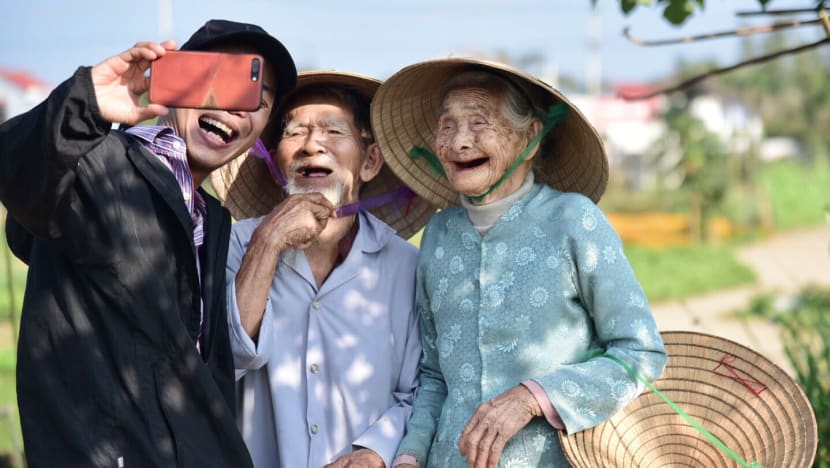
Spotting the visitors from their living room, Le Van So and Nguyen Thi quickly grab their hats and shuffle outside to greet their guests.
“You’re all very lucky today,” the tour guide said with a big smile on his face. “You get to meet the oldest living couple of Tra Que Village.”
Standing in front of their beautiful vegetable garden, the elderly couple’s faces crease into cheerful smiles as they get ready for selfies with the tourists.
For more on this and other projects around Southeast Asia, watch Tapestry: The Heart of ASEAN on Toggle.














